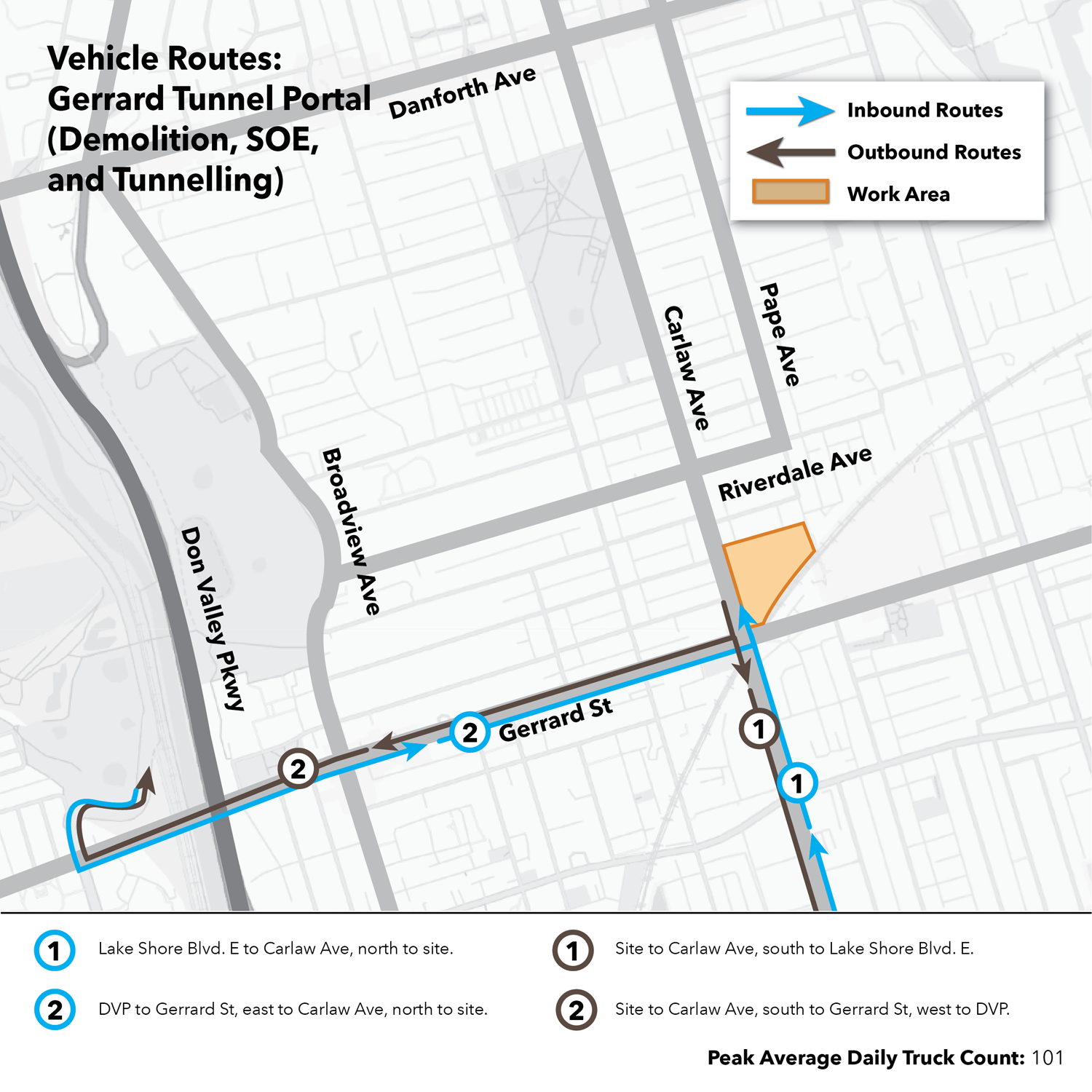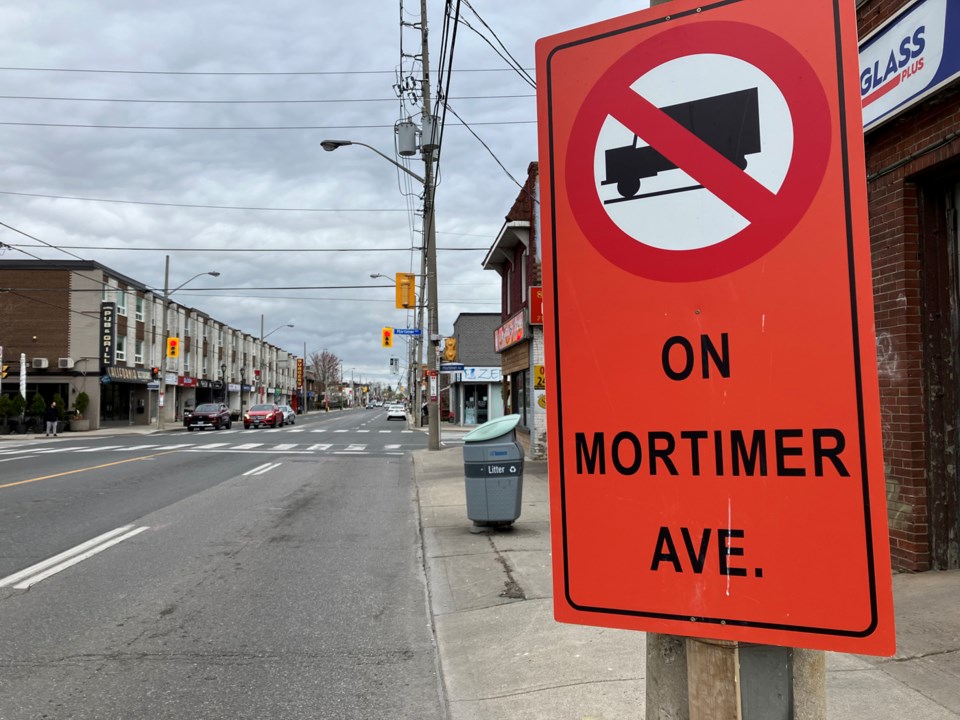Metrolinx is relying on the public to report when Ontario Line construction vehicles violate safety rules because it cannot track all of the heavy trucks itself. That's according to the transit agency’s new truck safety plan published on Monday.
As part of the long-awaited plan, Metrolinx has included detailed route maps that heavy trucks working on Ontario Line construction must stick to.
Multiple trucks were previously found to be violating route rules and driving through residential areas in Riverdale.
The maps will make it easier for members of the public to report trucks that stray from their haul routes — something Metrolinx says it encourages.
“Metrolinx recognizes that it is not possible to track the movement of every construction-related vehicle across the road network,” the plan says. “As such, public input plays a vital role in identifying potential violations and promoting accountability.”
“Residents are often the first to observe trucks straying from approved routes or operating in an unsafe manner, and their feedback is an important supplement to formal oversight measures.”
The move comes six weeks after a city council passed a resolution urging Metrolinx to "prominently post" Ontario Line truck haul routes on its website.
At its April meeting, council also asked Metrolinx — a provincial agency that it has no authority over — to publish a truck safety plan by May 12, a deadline the transit agency missed by nearly a month.
In early February, a pedestrian suffered life-altering injuries when she was struck by a dump truck operated by a Metrolinx contractor making a right turn onto Mortimer Avenue from Pape Avenue that it wasn't allowed to make.
Later that month, another truck was caught making a similar turn.

Gerrard tunnel excavation will bring 100 heavy trucks daily
Metrolinx’s plan for removing massive amounts of tunnel debris has local city councillor Paula Fletcher concerned.
The haul route for the Gerrard tunnel excavation, which will have to handle all the excavated material from a 3.5-kilometre subway tunnel from a point north of Gerrard Street East to O’Connor Drive, uses a stretch of Gerrard Street East from Carlaw Avenue to the Bayview Avenue on-ramp to the west.
Up to 100 heavy trucks are expected to leave the site daily once tunnel construction begins, according to the Metrolinx document.
Fletcher expects 300,000 cubic metres of excavated material to be removed before the project is complete, bringing “congestion and potential safety issues” to the neighbourhood.
“I've asked now to meet with city staff to say, ‘Tell me who's reviewed this? Who said this was a good idea? How will this really work?’" she told TorontoToday.
Fletcher said she plans to hold "a big community meeting" to get input on the heavy truck safety plan, stressing the need for "guardrails.”
“What are the safety measures that absolutely need to be in place before any of it can happen?”
However, she pointed out that the city has no authority over Metrolinx, which is a provincial agency.
“This is the first time we've seen it,” she said of Metrolinx’s plan.
The transit sgency's truck safety plan lists some of the criteria used to select the routes trucks must take as they haul heavy materials in and out of future Ontario Line sites.
Ideally, the plan said roads should have good connections to the highway network; be able to handle heavy trucks; not be near schools, parks or hospitals; and not have streetcar lines or large numbers of pedestrians using them.
The plan cautions that "due to the complex and constrained operating environment of the Ontario Line, it may not be feasible to fully meet all criteria in every instance.”
Some haul routes do use streets that don’t meet the criteria, in part because of pedestrian activity, such as Queen Street East between Carlaw Avenue and Broadview Avenue, or Broadview Avenue between Queen Street East and Dundas Street East.
Trucks that leave their routes can be reported to 416-202-5100, or via email.
Editor's note: This story has been updated with remarks from Coun. Paula Fletcher.




